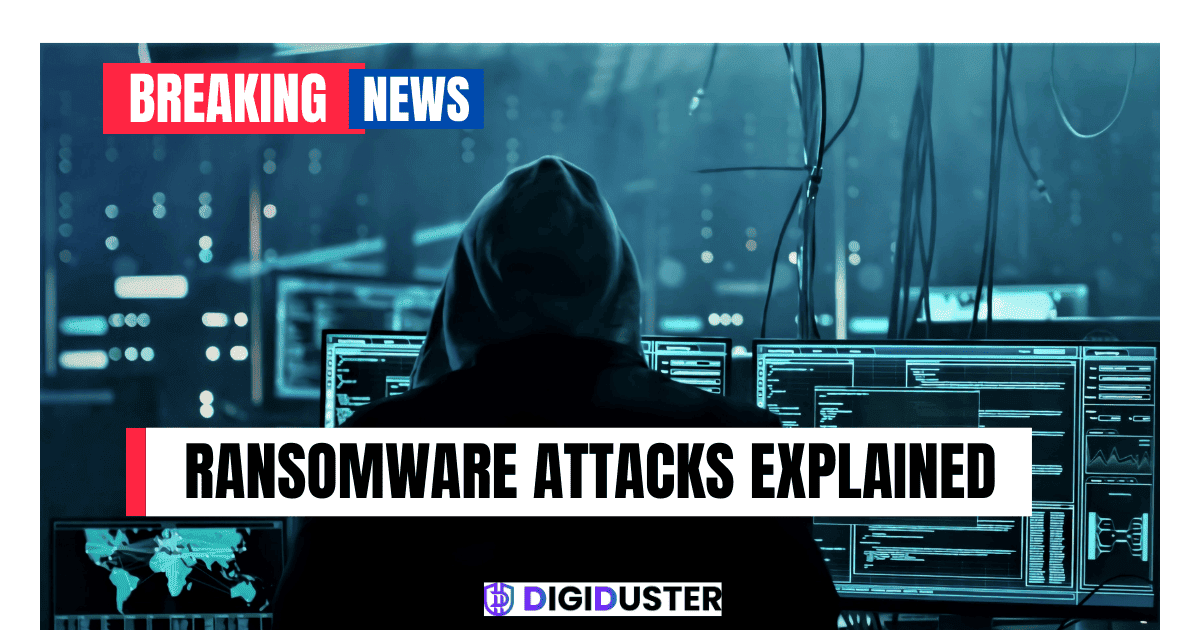Ransomware attacks are among the most dangerous ways cyber threats have grown into in today’s digital world. Ransomware is a growing threat in the cybersecurity landscape, as it can affect people and organizations alike. What is a ransomware attack, how do they work, and most importantly, what can you do to protect yourself from them? Let’s dive in.
What is Ransomware?
Ransomware is self-explaining: it will take your data or device ransom, meaning that when the first piece of this malicious software (malware) enters your system, you are kicked out of its info. Then, they demand a payment (often in the form of cryptocurrency such as Bitcoin) to be made—before they will return your access. This is, in essence, digital blackmail.
If infected, you may see a pop-up ransom note telling you that your files were encrypted and will not be recovered unless the specific amount was paid within a limited time. Missed payment will cause data to be lost forever or worse yet, sensitive information may leak.
How Does a Ransomware Attack Work?
Understanding how ransomware works is key to avoiding an attack. Here’s a simplified breakdown of the typical stages of a ransomware attack:
Infection Vector
Ransomware typically gains access to a system through phishing emails, malicious links, or compromised websites. It may also be spread via infected software or USB drives. Once you click on a malicious link or download an infected file, the ransomware begins its operation.
Execution and Encryption
Once the system is infected, ransomware gets to work encrypting all your sensitive files. Encrypting is what encrypts the data, it jumbles up basically so you cannot read unless you decrypt using a key. They can be documents, photos or videos of other file types and databases.
Ransom Note
The ransomware does display a message to let you know your files are encrypted after the process. The message is typically accompanied by directions on how to pay the ransom — often in Bitcoin or another cryptocurrency so that it can remain anonymous.
Pay or Decrypt
They are sent a ransom note with an ultimatum — you have to pay up (usually in Bitcoin) by the specified time if you want this magical key that will supposedly restore your files. Still, there is no guarantee that the attacker will decrypt your files although you pay. Sometimes victims do not get the decryption key, or it does not work properly.
Types of Ransomware Attacks
Ransomware attacks are of different types but the two common categories in which ransomware attack falls.
Crypto Ransomware
This means that anyone who suffers a ransomware attack, whether it is the encryption but also your files can receive back since paying the redemption. This is the most standard type of ransomware attack, and its ultimate aim would be to squeeze cash from the victim.
See also: A Deep Dive into Content Marketing & Paid Advertising ROI
Locker Ransomware
Locker ransomware also does not encrypt your files but on the other hand, it blocks you from accessing any part of the system. This forces you to pay the ransom before you can get access to anything again on your device. Though not as common today among ransomware families, it still represents a significant risk.
Famous Ransomware Attacks
Several high-profile ransomware attacks have made headlines in recent years
WannaCry (2017)
WannaCry was one of the biggest ransomware attacks in history infecting over 200,000 computers globally. That was –the malware targeted Windows systems, taking advantage of a known exploit that relies on an implanted backdoor mechanism in older software configurations. WannaCry had one of the most wide-reaching attack types, demanding Bitcoin payments that halted healthcare systems and businesses as well as government organizations.
NotPetya (2017)
NotPetya originally appeared to be a kind of ransomware but was later reclassified as destructive malware. Although ransom was the threat, its real intention was more chaos. Many global organizations were targets of NotPetya, which resulted in billions of dollars worth of damages.
The Colonial Pipeline Attack (Cyberpunkify Your Year 2021)
The Colonial Pipeline, one of the fastest and most extensive fuel pipelines in America, was brought down by a similar attack. The hackers asked for a ransom of $4.4 million — and it was paid. The attack led to panic buying and fuel shortages across parts of the U.S.
How to Protect Yourself from Ransomware
Ransomware is a nightmare, but there are steps you can take to protect yourself:
Backup Your Data
Back up your files on at regular periods to an external drive or a cloud service that is not tied to the network. Having backups can save you in the event of an attack from losing your data.
Be Cautious with Emails
Do not open emails or their attachments from unknown senders. Phishing emails are the most commonplace means through which ransomware propagates.
See also: The Role of Data Analytics in Modern Marketing Research
Update Software Regularly
Keep your operating system and software updated. Cybercriminals often exploit vulnerabilities in outdated software to deliver ransomware.
Use Antivirus as well as Anti-Malware Software
Get reputable antivirus software, which spots ransomware and stops it from infecting your system. Real-time scanning for ransomware threats is a feature of most security programs.
Turn on Firewalls and Network Protections
Make sure that no one is using your network without permission through a firewall. Finally, intrusion detection systems (IDS) make a key network security as well that detects and prevents malicious activity based on known signatures among others.
Avoid Paying the Ransom
Most cybersecurity experts usually recommend not paying the ransom. Despite paying the ransom, there is no assurance that your files will be decrypted and it only encourages future attacks. Instead, reach out to your local law enforcement and get help from an expert so they can retrieve the data.
Conclusion:
Future of Ransomware
Ransomware attacks are getting bolder and capable of higher ransoms from larger organizations. Given the growth in cryptocurrency and working from home, ransomware may remain one of the top cybersecurity threats in the coming years.
Continuous preparedness is the best offence against ransomware. Keeping up to date with the news, following guidelines for data security and simple tried-and-tested online practices can dramatically lower the chances of this harmful type of attack occurring.



